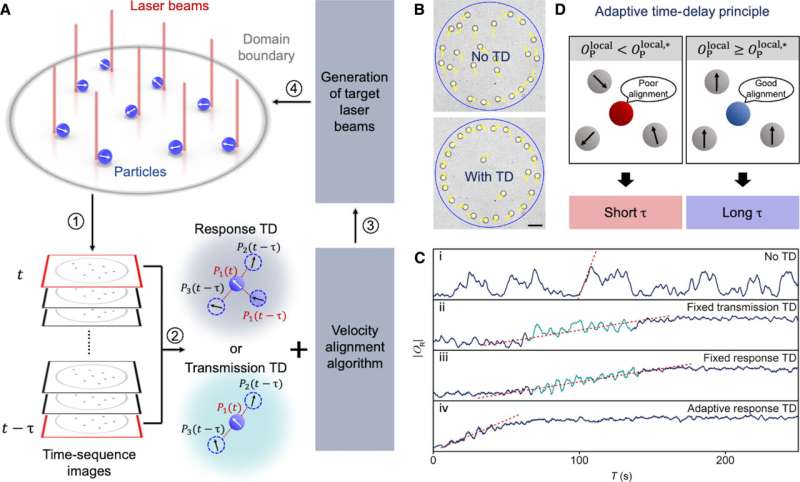This article has been reviewed according to Science X's editorial process and policies. Editors have highlighted the following attributes while ensuring the content's credibility:
fact-checked
peer-reviewed publication
trusted source
proofread
'Smart swarms' of tiny robots inspired by natural herd mentality

In natural ecosystems, the herd mentality plays a major role—from schools of fish, to beehives to ant colonies. This collective behavior allows the whole to exceed the sum of its parts and better respond to threats and challenges.
This behavior has inspired researchers from The University of Texas at Austin, and for more than a year they've been working on creating "smart swarms" of microscopic robots. The researchers engineered social interactions among these tiny machines so that they could act as one coordinated group, performing tasks better than they would if they were moving as individuals or at random.
"All these groups, flocks of birds, schools of fish and others, each member of the group has this natural inclination to work in concert with its neighbor, and together they are smarter, stronger and more efficient than they would be on their own," said Yuebing Zheng, associate professor in the Walker Department of Mechanical Engineering and Texas Materials Institute. "We wanted to learn more about the mechanisms that make this happen and see if we can reproduce it."
Zheng and his team first showcased these innovations in a paper published in Advanced Materials last year. But they've taken things a step further in a new paper published recently in Science Advances.
In the new paper, Zheng and his team have given these swarms a new trait called adaptive time delay. This concept allows each microrobot within the swarm to adapt its motion to changes in local surroundings. By doing this, the swarm showed a significant increase in responsivity without decreasing its robustness—the ability to quickly respond to any environmental change while maintaining the integrity of the swarm.
This finding builds on a novel optical feedback system—the ability to direct these microrobots in a collective way using controllable light patterns. This system was first unveiled in the researchers' 2023 paper—recently chosen as an "editor's choice" by Advanced Materials—and it facilitated the development of adaptive time delay for microrobots.
The adaptive time delay strategy offers potential for scalability and integration into larger machinery. This approach could significantly enhance the operational efficiency of autonomous drone fleets. Similarly, it could enable conveys of trucks and cars to autonomously navigate extensive highway journeys in unison, with improved responsiveness and increased robustness. In the same way schools of fish can communicate and follow each other, so will these machines. As a result, there's no need for any kind of central control, which takes more data and energy to operate.
"Nanorobots, on an individual basis, are vulnerable to complex environments; they struggle to navigate effectively in challenging conditions such as bloodstreams or polluted waters," said Zhihan Chen, a Ph.D. student in Zheng's lab and co-author on the new paper. "This collective motion can help them better navigate a complicated environment and reach the target efficiently and avoid obstacles or threats."
Having proven this swarm mentality in the lab setting, the next step is to introduce more obstacles. These experiments were conducted in a static liquid solution. Up next, they'll try to repeat the behavior in flowing liquid. And then they'll move to replicate it inside an organism.
Once fully developed, these smart swarms could serve as advanced drug delivery forces, able to navigate the human body and elude its defenses to bring medicine to its target. Or, they could operate like iRobot robotic vacuums, but for contaminated water, collectively cleaning every bit of an area together.
More information: Zhihan Chen et al, Persistent and responsive collective motion with adaptive time delay, Science Advances (2024). DOI: 10.1126/sciadv.adk3914


















